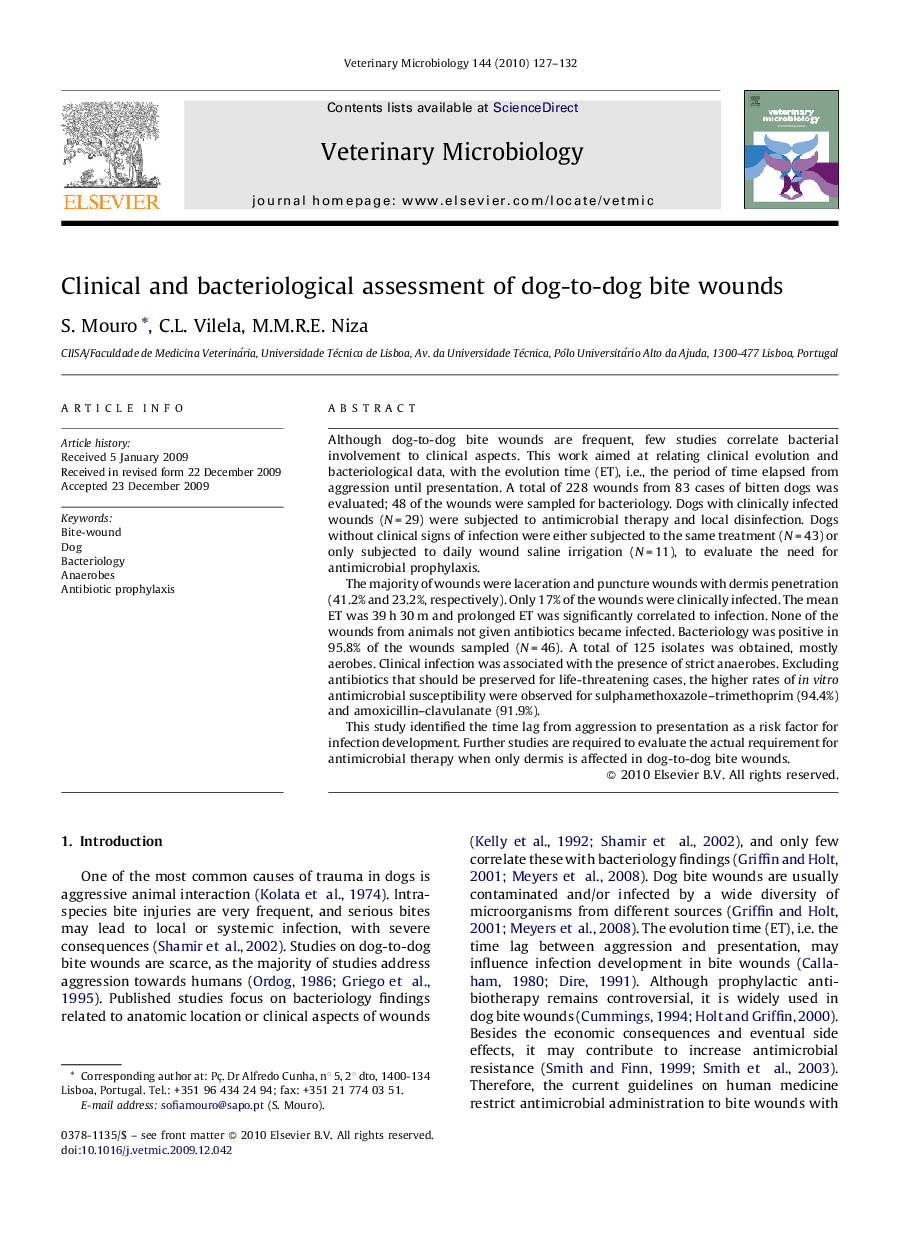| کد مقاله | کد نشریه | سال انتشار | مقاله انگلیسی | نسخه تمام متن |
|---|---|---|---|---|
| 2467849 | 1555412 | 2010 | 6 صفحه PDF | دانلود رایگان |

Although dog-to-dog bite wounds are frequent, few studies correlate bacterial involvement to clinical aspects. This work aimed at relating clinical evolution and bacteriological data, with the evolution time (ET), i.e., the period of time elapsed from aggression until presentation. A total of 228 wounds from 83 cases of bitten dogs was evaluated; 48 of the wounds were sampled for bacteriology. Dogs with clinically infected wounds (N = 29) were subjected to antimicrobial therapy and local disinfection. Dogs without clinical signs of infection were either subjected to the same treatment (N = 43) or only subjected to daily wound saline irrigation (N = 11), to evaluate the need for antimicrobial prophylaxis.The majority of wounds were laceration and puncture wounds with dermis penetration (41.2% and 23.2%, respectively). Only 17% of the wounds were clinically infected. The mean ET was 39 h 30 m and prolonged ET was significantly correlated to infection. None of the wounds from animals not given antibiotics became infected. Bacteriology was positive in 95.8% of the wounds sampled (N = 46). A total of 125 isolates was obtained, mostly aerobes. Clinical infection was associated with the presence of strict anaerobes. Excluding antibiotics that should be preserved for life-threatening cases, the higher rates of in vitro antimicrobial susceptibility were observed for sulphamethoxazole–trimethoprim (94.4%) and amoxicillin–clavulanate (91.9%).This study identified the time lag from aggression to presentation as a risk factor for infection development. Further studies are required to evaluate the actual requirement for antimicrobial therapy when only dermis is affected in dog-to-dog bite wounds.
Journal: Veterinary Microbiology - Volume 144, Issues 1–2, 29 July 2010, Pages 127–132